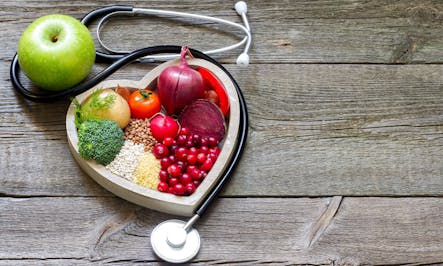
The Healthy Citizen Copyright © 2023
Practical Tips for Healthy Eating
Author "Volpe, Stella Lucia Ph.D., R.D., L.D.N., FACSM"
Source "ACSM’s Health & Fitness Journal: May/June 2013 - Volume 17 - Issue 3 - p 26-27"
doi "10.1249/FIT.0b013e31828cb6ac"
License "CC BY 4.0"
Oftentimes, your clients or you may think that it can be difficult to eat healthily, especially on really busy days or when you get home from work and the kids are demanding your attention, it is already 7 p.m. These tips are, by the way, in no special order. Perhaps, though, one or two will resonate with you and may help you to increase fruit and/or vegetable intake or increase whole grain consumption.
Tip No. 1
Buy frozen vegetables, without any sauces, that are microwaveable in the bag. There are even cut up potatoes in the freezer that can be microwaved! How do I know these things? Because I often have used these frozen food items when I get home from work at 8 or 9 p.m.!
If you are worried that frozen vegetables are not as nutritious as fresh, do not be concerned. Frozen vegetables are often flash-frozen, preserving their nutrients. Furthermore, they will not go bad in the freezer, at least not as quickly as the fresh vegetables will. I want to make it clear that eating fresh vegetables and fruits is wonderful for us and they taste the best; however, you can still eat more healthily and cut down on your preparation time if you use frozen vegetables
Tip No. 2
Buy things like chicken breasts, tofu that is already cubed, or beef tenders, so you can easily make baked chicken, tofu stir fry, or beef tenders and vegetables. Although purchasing foods that are more convenient to prepare may be a little more expensive, doing this may help you eat better and change your overall behavior in food choices. Then, once you get a better routine in place, you can buy whole cuts of meat, poultry, or fish and cut them up and wrap them individually in the freezer for use when needed.
Tip No. 3
Prepare foods on the stove top or in the oven in one pan. Many times, I use a little olive oil, garlic, and onions, then place the protein food in first to cook thoroughly. After that, I add the vegetables (frozen or fresh) and my spices and let that all simmer together. It tastes great, is easy to make, and there is less cleanup afterward!
Tip No. 4
Keep things like cereal, milk, and yogurt around for good snacking. Cereal with milk and yogurt are excellent snacks. Adding things like sunflower seeds, chia seeds, flax seeds, pomegranates, mixed berries, bananas, or other fruits to either the cereal or yogurt make them even more nutritious and will help increase your fruit and vegetable intake, as well as increase omega-3 fatty acid consumption (chia seeds, flax seeds).
Tip No. 5
Do not go so long in-between meals that you are famished before a meal. Eating small frequent meals is a great thing to do. You also can consume small snacks between meals, like a tablespoon of almonds, a small yogurt, a granola bar, or an apple with peanut butter, all of which will help maintain your blood sugar levels more steadily throughout the day. This also will allow you to go into your workouts with more energy and not be famished for your next meal. Be sure that you only allow yourself the proper portions, so that you do not overeat.
SUMMARY
I hope that these five practical tips will help you either maintain what you already do or move you toward eating more healthily. All of these can help with exercise performance and with weight loss and/or maintenance. Being more consistent with eating patterns, varying your intake of foods, and enjoying what you eat are all important to improved overall health and exercise performance for you and your clients.
© 2013 American College of Sports Medicine
Filled Under: General Health Posts
